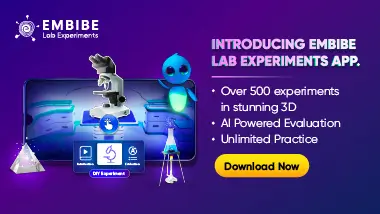Describe the structure of a seminiferous tubule.

Important Points to Remember in Chapter -1 - Human Reproduction from NCERT BIOLOGY TEXTBOOK FOR CLASS XII Solutions
(i) Human beings reproduce sexually and are viviparous.
(ii) The reproductive system becomes fully active during puberty.
2. Male Reproductive System:
(i) The primary sex organs (gonads) are testes in males and ovaries in females.
(ii) Gonads produce gametes and secrete sex hormones.
(iii) The male reproductive system consists of a pair of testes, accessory glands, a duct system and penis.
(iv) Testis contains numerous highly coiled seminiferous tubules lined inside by spermatogonia and Sertoli cells.
(v) The spermatogonia undergo meiotic divisions leading to sperm formation.
(vi) Sertoli cells provide nutrition to the developing spermatozoa and secrete hormone inhibin.
(vii) Leydig cells in the interstitial tissue surrounding seminiferous tubules, synthesise and secrete male hormone called testosterone.
(viii) The male external genitalia is the scrotum and copulatory organ called penis.
3. Female Reproductive System:
(i) The female reproductive system consists of the ovaries, fallopian tubes (oviducts or uterine tubes), uterus, uterine cervix, vagina, accessory genital glands, external genitalia and mammary glands.
(ii) The ovaries produce oocytes and female sex hormones which are oestrogen and progesterone.
(iii) Cortex of the ovary contains ovarian follicles in different stages of development.
(iv) A fully matured follicle, called Graafian follicle is a fluid-filled vesicle containing a maturing ovum.
(v) The fallopian tubes, uterus and vagina are female accessory ducts.
(vi) The uterus is a hollow, thick-walled organ that receives, retains and nourishes a fertilized ovum.
(vii) The vagina provides a passageway for the delivery of baby, for menstrual flow and for delivery of semen (and sperm) to the uterine tube.
(viii) The female external genitalia includes mons pubis, labia majora, labia minora, hymen and clitoris.
(ix) The mammary glands produce milk and nourish the newborn baby.
4. Gametogenesis:
(i) Spermatogenesis is the production of sperms in the testis and oogenesis is the production of ova in the ovary.
(ii) A typical human sperm is flagellated consisting of four parts namely head, neck, middle piece and tail.
5. Menstrual Cycle:
(i) Menstrual cycle is the cyclic changes related to ovulation and the secretion of ovarian hormones.
(ii) Menstrual cycle starts only after attaining sexual maturation (puberty).
(iii) First menstrual period in a teen girl is called menarche.
(iv) Menopause is the period of natural cessation of menstruation, usually occurring between the ages of 45 and 55 (change of life).
(v) The ovum is ejected from the follicle near the end of proliferative phase i.e., 14th day or midway during menstrual cycle.
(vi) The cyclic changes in the ovary and the uterus during menstrual cycle are induced by changes in the levels of pituitary (FSH, LH) and ovarian (oestrogen, progesterone) hormones.
6. Fertilisation:
After sexual intercourse, sperms are transported to the junction of the isthmus and ampulla, where the sperm fertilizes the ovum leading to formation of a diploid zygote.
7. Sex determination and Post - Fertilisation Events:
(i) The fertilization of ovum by or chromosome bearing sperm determines the sex of the embryo. The zygote undergoes cleavage division to form a blastocyst, which is implanted in the endometrium of the uterus resulting in pregnancy.
(ii) After nine months of pregnancy, the fully developed foetus is ready for delivery.
(iii) The process of childbirth is called parturition which is induced by a complex neuroendocrine mechanism involving the hormones cortisol, oestrogens and oxytocin.
(iv) The newborn baby is fed milk by the mother (lactation) during the initial few months of growth.
